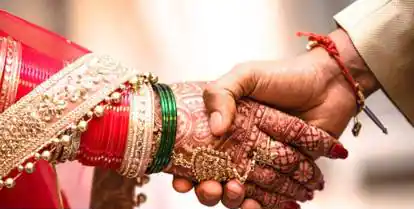Introduction
India has taken a significant step towards achieving Goal 5 of the Sustainable Development Goals (SDGs), which explicitly calls upon nation-states to formulate policies for achieving gender equality. The recent move by the Centre to ensure gender equality in marriage age by raising the minimum marriageable age for women to 21 years exemplifies this commitment.
Background
India ratified the Convention on the Elimination of All Forms of Discrimination Against Women in 1993. Article 16 of the Convention explicitly prohibits child marriage and urges governments to establish and enforce a minimum marriage age for women. Since 1998, India has enacted national legislation exclusively focused on protecting human rights, in harmony with international instruments such as the Universal Declaration of Human Rights (1948). Safeguarding women against early and child marriage is an essential aspect of their basic rights, and this significant step will contribute to changes in similar legislative frameworks, establishing a collective rights-based framework for the entire population.
Equality in Practice: The Marriage Age Revolution
The regressive perception that marriage provides women with social protections and security needs to change. It is widely recognized that child marriage exposes women to early pregnancies, malnutrition, and various forms of exploitation, including mental, emotional, and physical abuse. As a result, such marriages have been addressed by the Prohibition of Child Marriage Act, 2006. However, a discrepancy exists in Section 2(a) of the Act, which categorizes women under the age of 18 as children, while men must be 21. This difference appears to lack a justifiable rationale. The age of voting is equal for men and women under the Representation of the People Act, and the age at which individuals can consensually, willingly, and validly enter into marriage is also the same for both men and women. So, what has prevented us from ensuring equality in the age requirements for legal marriage? This difference in criteria is more rooted in social norms than biology. The general arguments, based on local value judgments, that women should be younger in marriage have gradually become outdated. Today, women stand on an equal footing with men in all conceivable aspects of life. Equality arises from equal laws, and social transformations both precede and result from these laws. Positive changes made in policy fundamentally alter societal perceptions in future societies. The equality in marriage age recently introduced by the Narendra Modi administration will further complement its many initiatives to enhance women’s education.
Final Words
According to the All-India Survey on Higher Education, the enrolment of female students in higher education has increased from 46.2 percent in 2015-16 to 49 percent in 2019-20. The overall growth in female student enrolment between 2015 and 2020 has reached 18.2 percent. It’s worth noting that in various government schemes, from Ujjwala to Mudra to Pradhan Mantri Jan-Dhan Yojana, women have been the largest section of beneficiaries. In Indian politics, we are currently witnessing a historic level of women’s representation in crucial decision-making positions, ranging from the Union Council of Ministers to party structures. Women’s empowerment is set to receive a significant boost following the achievement of equality in marriage age.
Disclaimer: This is an opinion piece. All the views expressed are personal.
AUTHOR:
Heena
[email protected]
B.A. (H) Economics, 3rd Year
Daulat Ram College, University of Delhi


Recent Comments